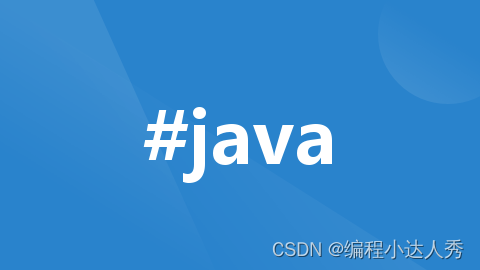
- Python (Flask 后端示例)gzrrgx.com
python
from flask import Flask, request, jsonify
app = Flask(name)
@app.route(‘/api/hello’, methods=[‘GET’])
def hello():
return jsonify({‘message’: ‘Hello, World!’})
if name == ‘main’:
app.run(debug=True)
2. JavaScript (Node.js 后端示例)
javascript
const express = require(‘express’);
const app = express();
const port = 3000;
app.get(‘/api/hello’, (req, res) => {
res.json({ message: ‘Hello, World!’ });
});
app.listen(port, () => {
console.log(Server is running on port ${port});
});
3. Java (Android 示例 - Activity中的简单UI)
java
import android.os.Bundle;
import android.app.Activity;
import android.widget.TextView;
public class MainActivity extends Activity {
@Override
protected void onCreate(Bundle savedInstanceState) {
super.onCreate(savedInstanceState);
setContentView(R.layout.activity_main);
TextView textView = findViewById(R.id.textView);
textView.setText("Hello, World!");
}
}
(注意:这里假设你有一个名为activity_main.xml的布局文件,并且其中有一个id为textView的TextView。)
- Swift (iOS 示例 - ViewController中的简单UI)
swift
import UIKit
class ViewController: UIViewController {
override func viewDidLoad() {
super.viewDidLoad()
// Do any additional setup after loading the view.
let label = UILabel()
label.text = "Hello, World!"
label.frame = CGRect(x: 50, y: 100, width: 200, height: 50)
view.addSubview(label)
}
}
5. Dart (Flutter 跨平台App示例)
dart
import ‘package:flutter/material.dart’;
void main() {
runApp(MyApp());
}
class MyApp extends StatelessWidget {
@override
Widget build(BuildContext context) {
return MaterialApp(
title: ‘Flutter Demo’,
theme: ThemeData(
primarySwatch: Colors.blue,
),
home: MyHomePage(title: ‘Hello Flutter’),
);
}
}
class MyHomePage extends StatefulWidget {
MyHomePage({Key? key, required this.title}) : super(key: key);
final String title;
@override
_MyHomePageState createState() => _MyHomePageState();
}
class _MyHomePageState extends State {
@override
Widget build(BuildContext context) {
return Scaffold(
appBar: AppBar(
title: Text(widget.title),
),
body: Center(
child: Text(‘Hello, World!’),
),
);
}
}
这些示例只是非常基础的代码片段,用于展示如何在不同的编程语言和平台上创建简单的“Hello, World!”应用。要开发一个完整的App,你还需要考虑很多其他因素,如用户输入、数据处理、网络通信、错误处理、安全性等。由于生成一个完整的App代码涉及多个方面(如前端、后端、数据库、UI设计等),并且不同的App平台(如iOS、Android、Web等)需要不同的技术和工具,这里我将给出一些简单的示例代码,分别用Python(后端)、JavaScript(前端/Node.js后端)、Java(Android后端)、Swift(iOS后端)和Dart(Flutter跨平台App)来展示。
- Python (Flask 后端示例)
python
from flask import Flask, request, jsonify
app = Flask(name)
@app.route(‘/api/hello’, methods=[‘GET’])
def hello():
return jsonify({‘message’: ‘Hello, World!’})
if name == ‘main’:
app.run(debug=True)
2. JavaScript (Node.js 后端示例)
javascript
const express = require(‘express’);
const app = express();
const port = 3000;
app.get(‘/api/hello’, (req, res) => {
res.json({ message: ‘Hello, World!’ });
});
app.listen(port, () => {
console.log(Server is running on port ${port});
});
3. Java (Android 示例 - Activity中的简单UI)
java
import android.os.Bundle;
import android.app.Activity;
import android.widget.TextView;
public class MainActivity extends Activity {
@Override
protected void onCreate(Bundle savedInstanceState) {
super.onCreate(savedInstanceState);
setContentView(R.layout.activity_main);
TextView textView = findViewById(R.id.textView);
textView.setText("Hello, World!");
}
}
(注意:这里假设你有一个名为activity_main.xml的布局文件,并且其中有一个id为textView的TextView。)
- Swift (iOS 示例 - ViewController中的简单UI)
swift
import UIKit
class ViewController: UIViewController {
override func viewDidLoad() {
super.viewDidLoad()
// Do any additional setup after loading the view.
let label = UILabel()
label.text = "Hello, World!"
label.frame = CGRect(x: 50, y: 100, width: 200, height: 50)
view.addSubview(label)
}
}
5. Dart (Flutter 跨平台App示例)
dart
import ‘package:flutter/material.dart’;
void main() {
runApp(MyApp());
}
class MyApp extends StatelessWidget {
@override
Widget build(BuildContext context) {
return MaterialApp(
title: ‘Flutter Demo’,
theme: ThemeData(
primarySwatch: Colors.blue,
),
home: MyHomePage(title: ‘Hello Flutter’),
);
}
}
class MyHomePage extends StatefulWidget {
MyHomePage({Key? key, required this.title}) : super(key: key);
final String title;
@override
_MyHomePageState createState() => _MyHomePageState();
}
class _MyHomePageState extends State {
@override
Widget build(BuildContext context) {
return Scaffold(
appBar: AppBar(
title: Text(widget.title),
),
body: Center(
child: Text(‘Hello, World!’),
),
);
}
}
这些示例只是非常基础的代码片段,用于展示如何在不同的编程语言和平台上创建简单的“Hello, World!”应用。要开发一个完整的App,你还需要考虑很多其他因素,如用户输入、数据处理、网络通信、错误处理、安全性等。





















 995
995

 被折叠的 条评论
为什么被折叠?
被折叠的 条评论
为什么被折叠?








